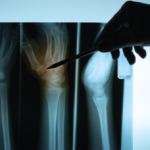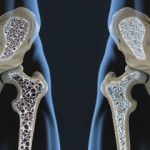WASHINGTON (Reuters)—On May 20, the U.S. Supreme Court threw out a lower court ruling that had revived hundreds of lawsuits accusing Merck & Co. of failing to properly warn patients of debilitating thigh-bone fractures as a result of taking its osteoporosis drug alendronic acid (Fosamax). The nine justices unanimously directed the Philadelphia-based 3rd U.S. Circuit…

Prevent Osteoporotic Fractures with a Fracture Liaison Service
Imagine leaving the hospital after suffering a heart attack without being treated for hypertension or being started on a beta blocker. What would we think of the hospital where patients are never educated about the relationship between treating hypertension and reducing myocardial infarction and stroke risk? Unfortunately, this happens every day with osteoporosis and fractures…
ACR Leaders to Meet with Members of Congress
On May 16, ACR and ARP leaders serving on the Board of Directors, Affiliate Society Council, Government Affairs Committee, Committee on Rheumatologic Care, RheumPAC and Insurance Subcommittee will go to Capitol Hill to advocate on behalf of the College’s membership and our patients. The group represents 31 states and the District of Columbia, and will…
Osteoporotic Fracture Rates Similar with Denosumab, Alendronate in Real World
NEW YORK (Reuters Health)—Rates of osteoporotic fracture were similar three years after starting either denosumab or alendronate in a real-world Danish population-based cohort study. “Previous studies have shown that denosumab is more efficacious than alendronate in increasing bone mineral density (BMD), possibly the best proxy outcome for subsequent fracture risk. However, previous studies were underpowered…

FDA Approves New Osteoporosis Medication
Romosozumab-aqqg has been approved in the U.S. for treating postmenopausal women with osteoporosis at high risk of fracture…

Dietary Calcium Intake Not Associated with Bone Loss
Postmenopausal women are often told to consume more than 1,500 mg of calcium daily to reach neutral bone balance. But new research suggests this recommendation should be revised, finding no connection between dietary calcium intake and postmenopausal bone loss…
FDA Greenlights Osteoporosis Drug for Postmenopausal Women
(Reuters)—The U.S. Food and Drug Administration says it has approved Amgen’s osteoporosis treatment for postmenopausal women who are at high risk of fracture. Evenity (romosozumab-aqqg), developed jointly with Belgium-based UCB SA, helps reduce the risk of fracture by increasing bone mass and mildly inhibiting the break down of bone minerals. Romosozumab-aqqg belongs to a new…

Tracking Bone Deterioration in Patients with Ankylosing Spondylitis
Trabecular bone score and high-resolution peripheral quantitative computed tomography may be effective for evaluating bone impairment in patients ankylosing spondylitis (AS). Rheumatologists may be able to use these methods, complementary to dual-energy X-ray absorptiometry, to identify bone quality deterioration in AS patients.
Knee Replacement in Younger Patients Has Higher Complication Rate
NEW YORK (Reuters Health)—Total knee replacement (TKA) is increasingly being performed in younger patients, and new research suggests that these patients have a higher risk for complications than older patients. “The number of knee replacements we are doing in younger and younger patients keeps increasing every year and we need to let these patients know…

Osteoporosis Experts Discuss Bisphosphonates, Chronic Kidney Disease
CHICAGO—The osteoporosis session at the 2018 ACR/ARHP Annual Meeting opened with a discussion by Kenneth Saag, MD, MSc, professor of medicine at the University of Alabama, Birmingham, in which he highlighted adverse events associated with osteoporosis medications. Dr. Saag began his presentation by emphasizing that, above all, the audience should keep in mind that the…
- « Previous Page
- 1
- …
- 8
- 9
- 10
- 11
- 12
- …
- 45
- Next Page »